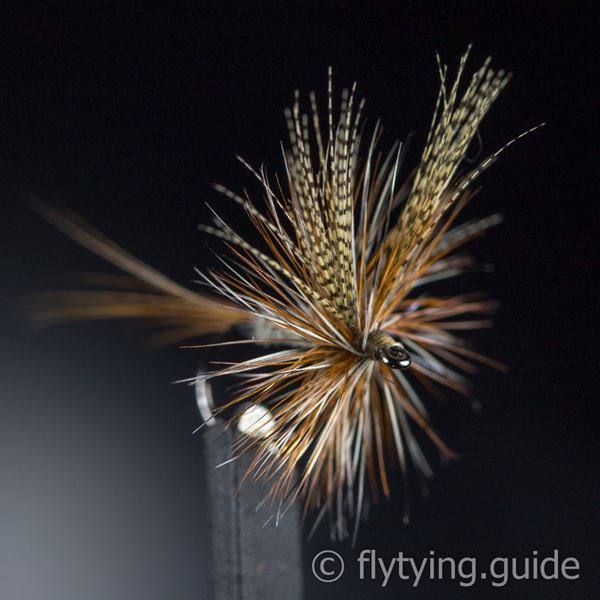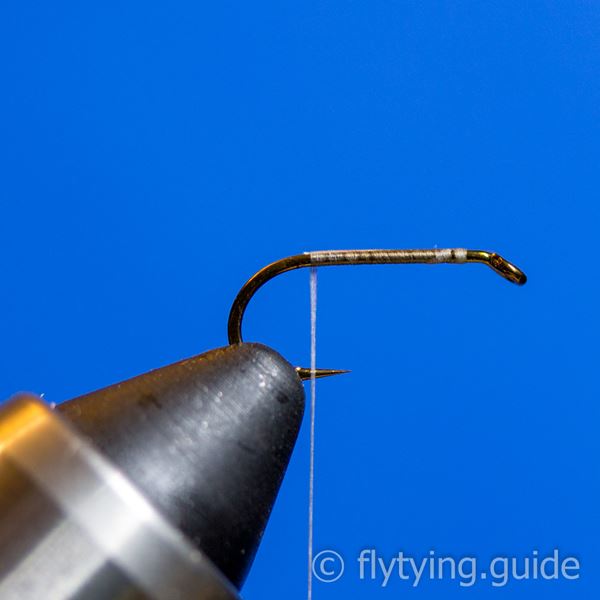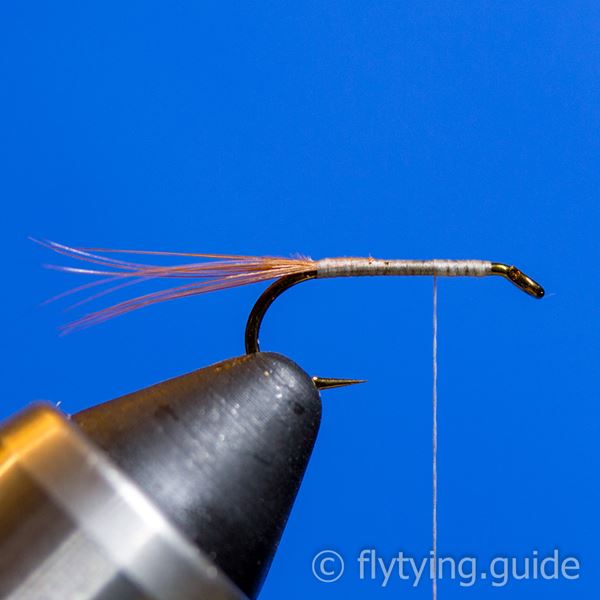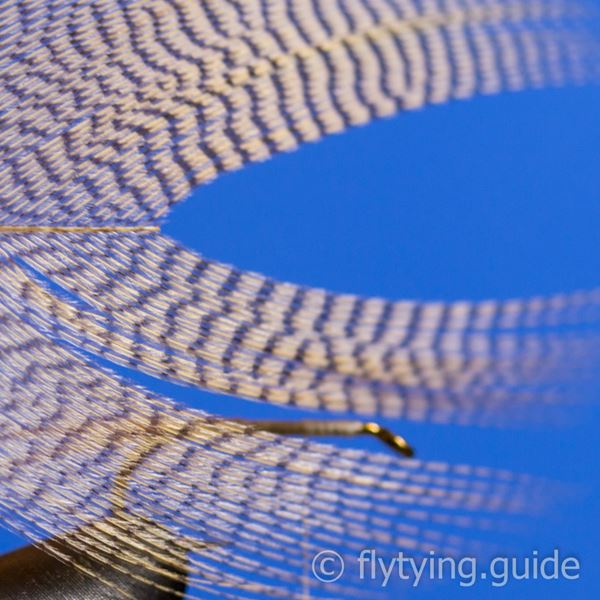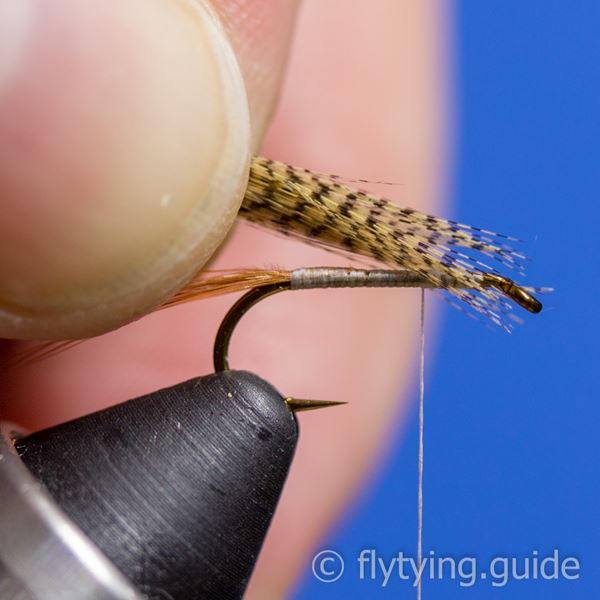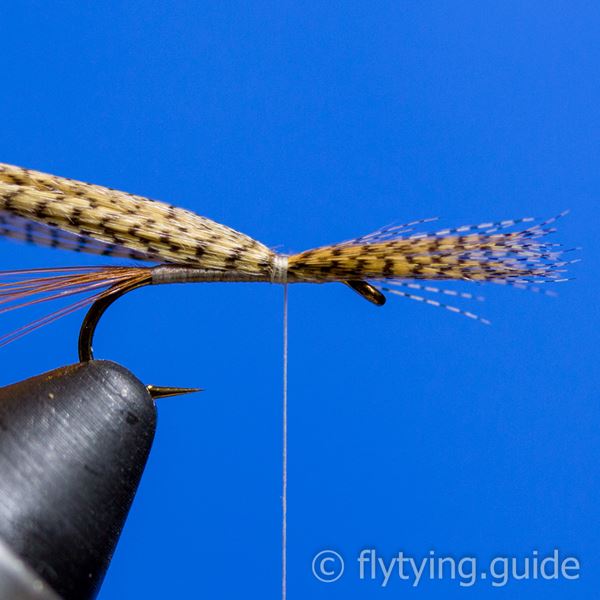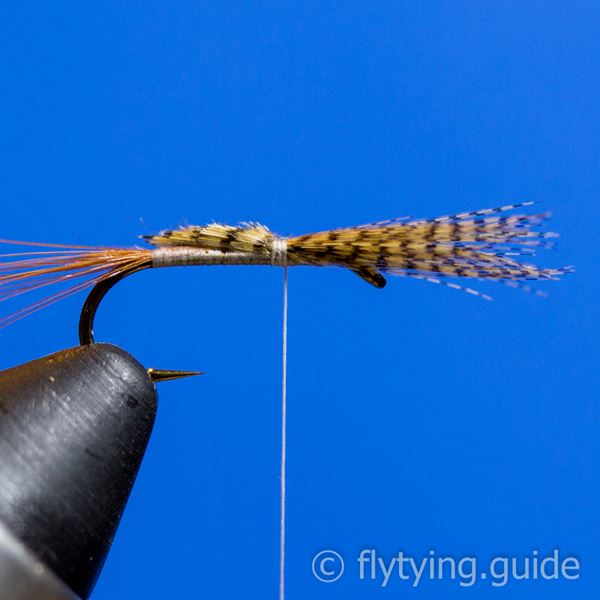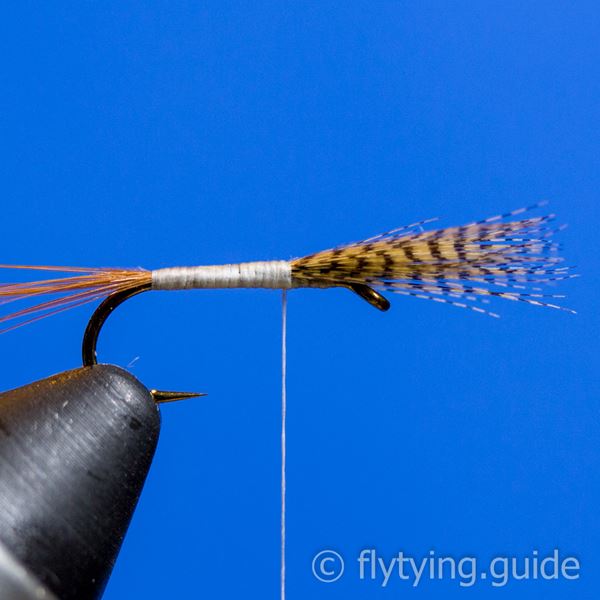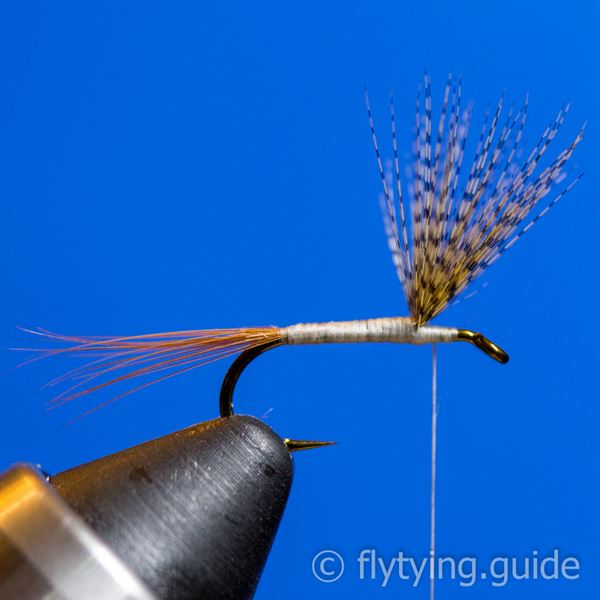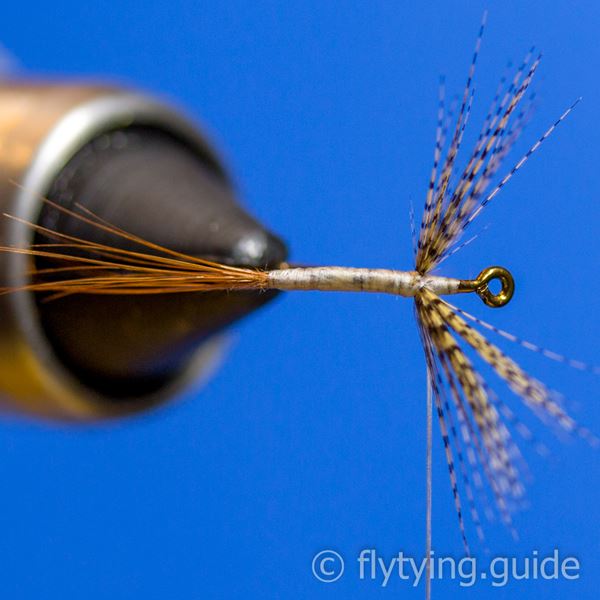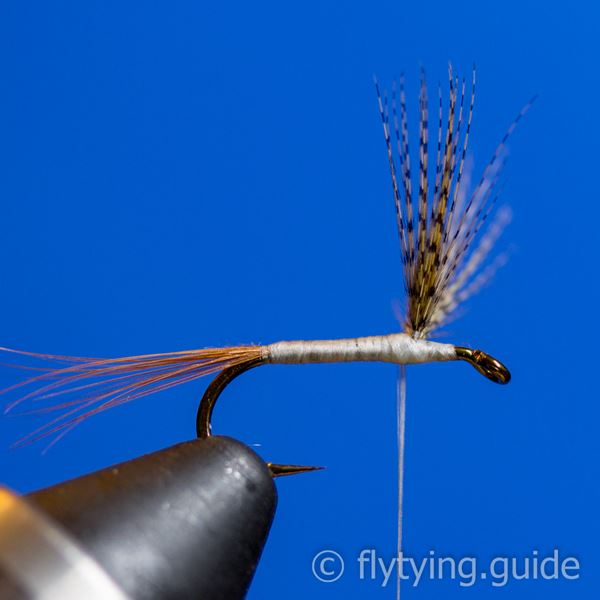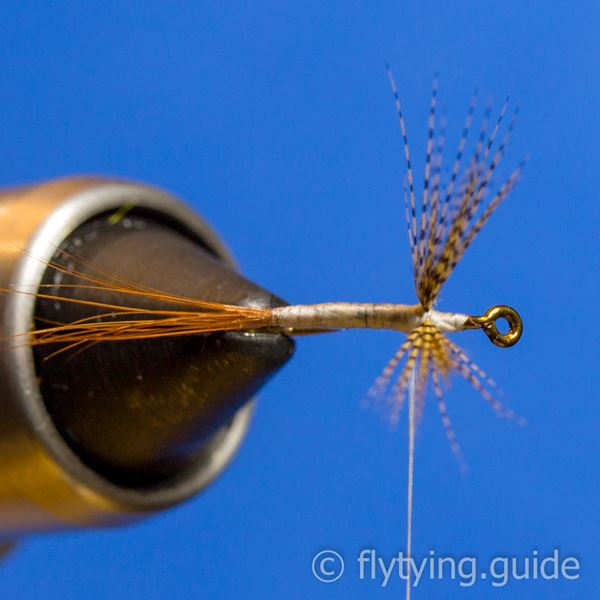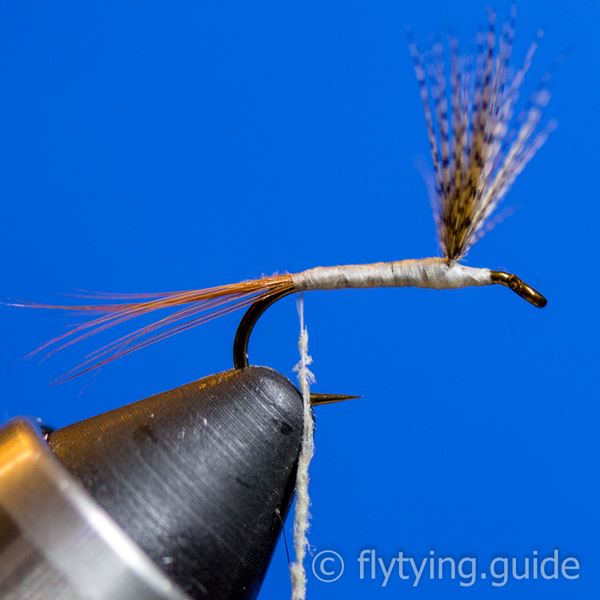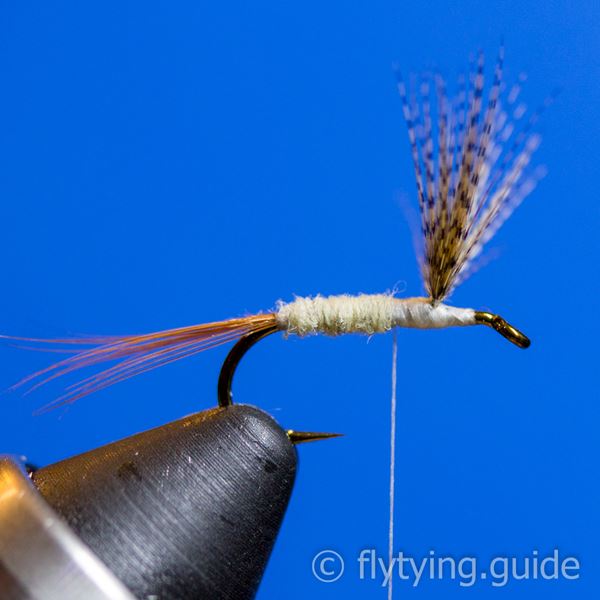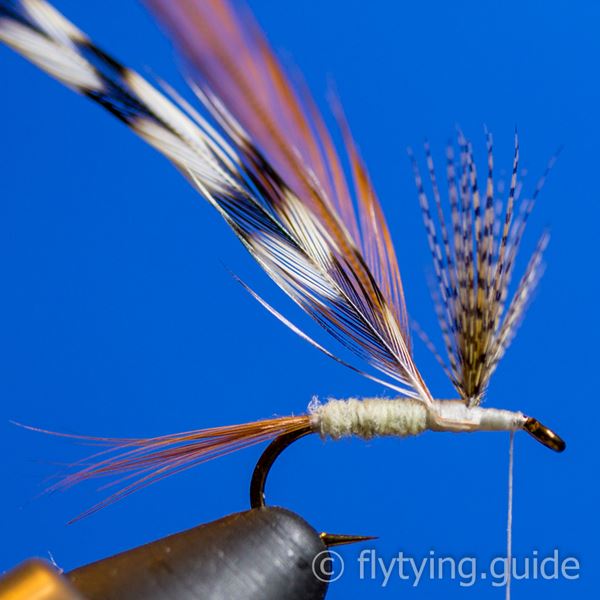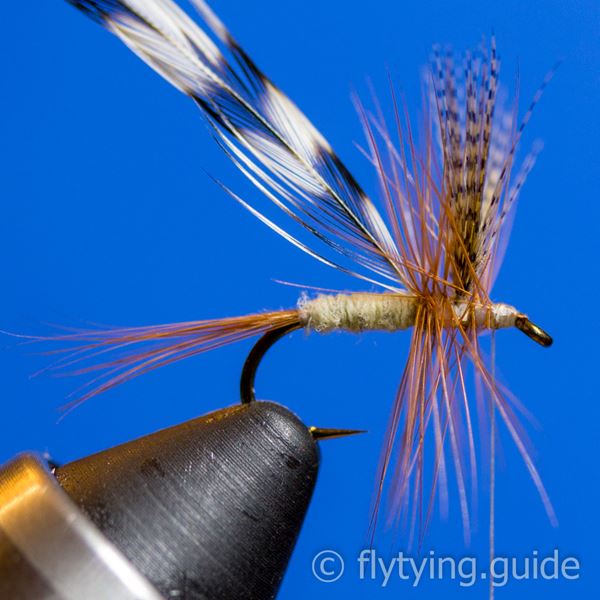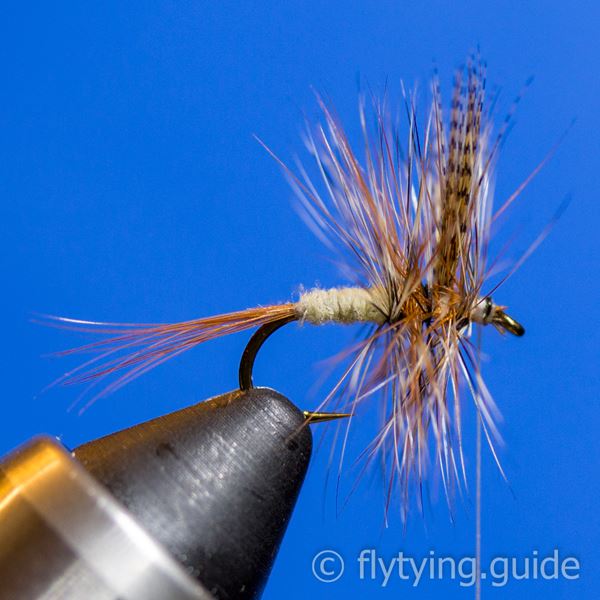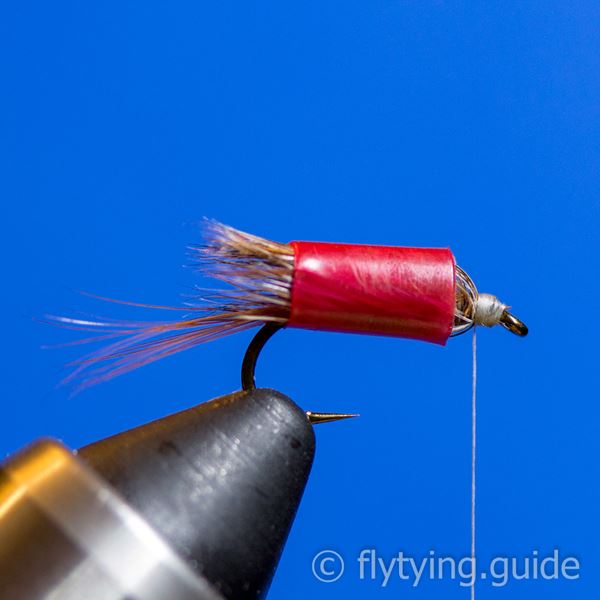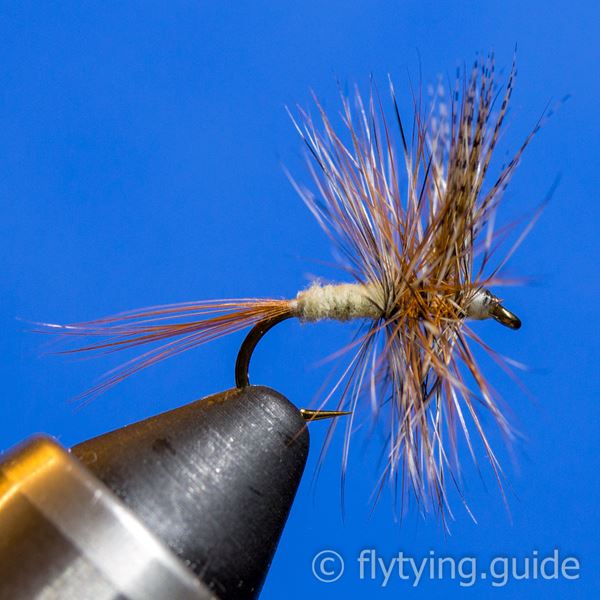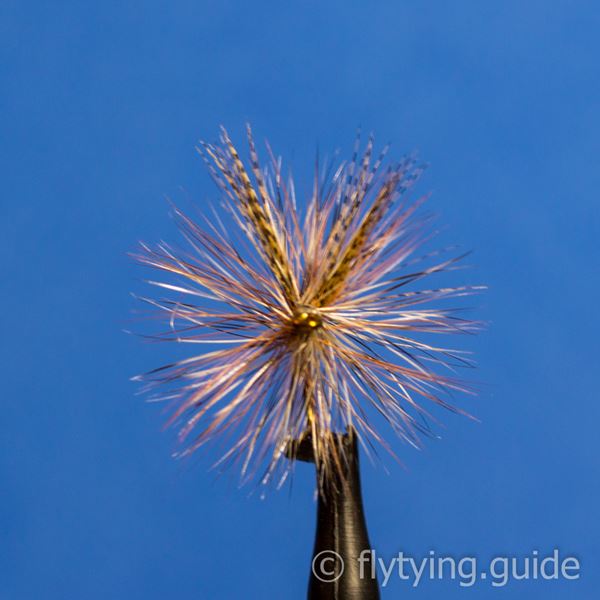March Brown Dry Fly
The march brown is a classic dry fly using brown and grizzle hackle, mallard flank feathers and a light dubbing material.
- Submitted By: Fly Tying Guide
Materials
9
Use a bodkin needle or similar to split the fibers evenly, and then place an x wrap to separate the wings.
To perform the x wrap, start in front of the wing and cross the thread on top of the hook shank between the separated fibers. Carry the thread around the bottom of the shank behind the wing and again cross the thread on top of the hook shank in the opposite direction to form an X between the wing bunches.
To perform the x wrap, start in front of the wing and cross the thread on top of the hook shank between the separated fibers. Carry the thread around the bottom of the shank behind the wing and again cross the thread on top of the hook shank in the opposite direction to form an X between the wing bunches.
10
Use a figure 8 wrap to compress the bunches and pull them on top of the hook shank. The figure 8 wrap is the trickiest part of the fly and will take some practice. This is the side view of the finished wrap.
To perform the figure 8 wrap start behind the wing. Start to take a wrap of thread, as your thread dips below the far wing (at about the 3/4 mark) you want to capture the base of the far wing with the thread by moving the thread in front of the wing, pinch the far wing with your off hand at this point and then cross the thread on top of the hook shank between the wings. You have just created the top portion of a figure 8. Apply enough pressure to bunch the wing fibers together and stand them up on top of the hook shank.
11
The top view of a finished figure 8 wrap.
Keeping a constant pressure so that you do not lose your work, release the far wing and pinch the near wing. Take a wrap around the near wing from back to front and then cross between the wing to complete the figure 8. Adjust the tension so that the wings are even and then take a wrap behind the wing to lock in the wraps. Repeat one or two more times until you are satisfied with the results.
